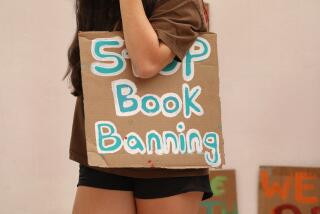Books and Film
- Share via
Is “Can books save Hollywood?” the question (“New Page in Tie-Ins of Books, Films,” Aug. 13) or: Can Hollywood save books? The point is, there is a mutually beneficial relationship that boosts both industries, as demonstrated by increased interest in a novel once the film has been released.
What is so intriguing about the book-film relationship? The answer seems to lie in differences between a novel and film, between our personal images of a character in print, and the images of those same characters on screen.
There is a spirit, though, an essence, that apparently can be translated from one medium to the other. This is easier to achieve with vividly descriptive authors such as Jane Austen, whose “Pride and Prejudice” was made into a film (1940 version) that sticks closely to the original, even using some dialogue from her book.
It seems more difficult to accomplish with the less linear or more abstract novel-made-into-film, such as Stephen Vincent Benet’s “The Devil and Daniel Webster” (1941). Yet creative filmmaking has achieved success even in these cases: The film of E. L. Doctorow’s “Ragtime” (1981) is one example. There is great stimulus for thought and discussion in the comparison.
JOYCE MOSS
Santa Monica
Moss is co-author of “From Page to Screen: Children’s and Young Adult Books on Film and Video.”
More to Read
Sign up for our Book Club newsletter
Get the latest news, events and more from the Los Angeles Times Book Club, and help us get L.A. reading and talking.
You may occasionally receive promotional content from the Los Angeles Times.










